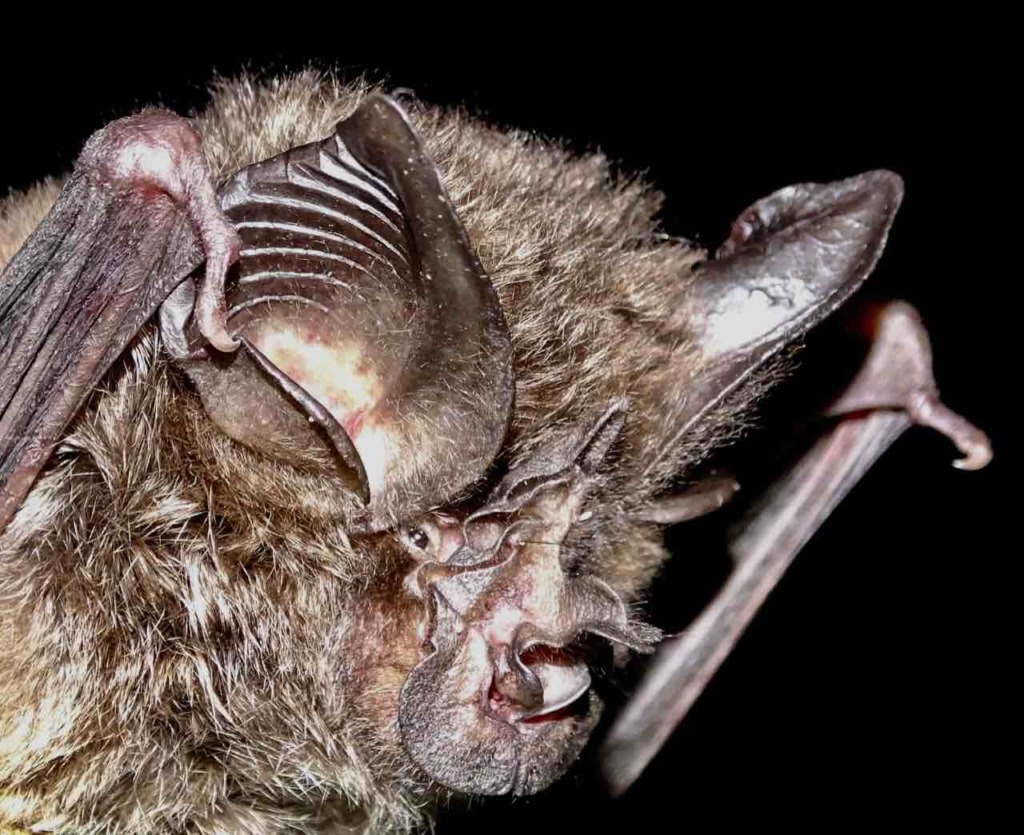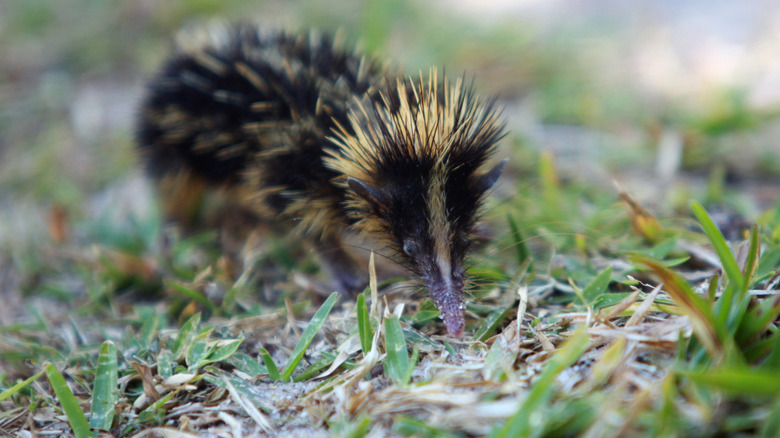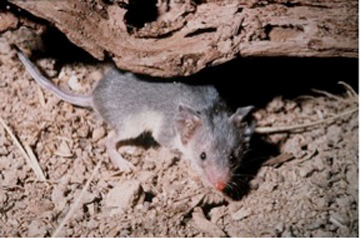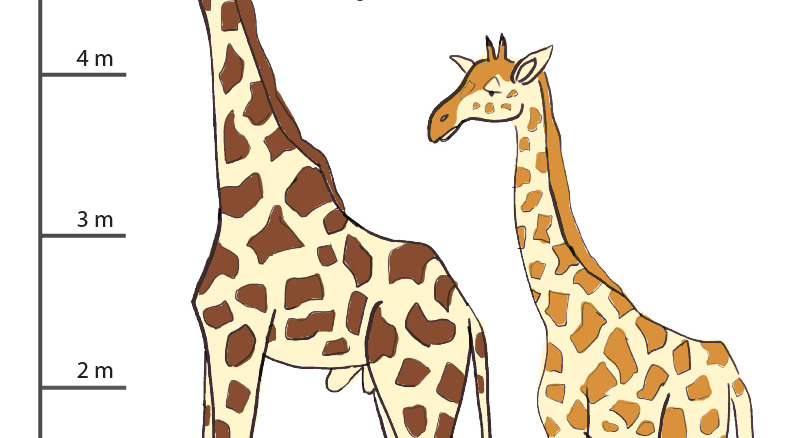
Bats are flying mammals
Bats are a type of mammal, just like us! Bats live in most regions of the world, except for cold polar zones and some islands. Bats are the only mammals capable of true flight. They have wings that they can flap up and down. (This is different from something like a flying squirrel, which glides through the air.) The wings of bats are modified from their forelimbs. Their long forearms and finger bones are covered by a membrane called the patagium.
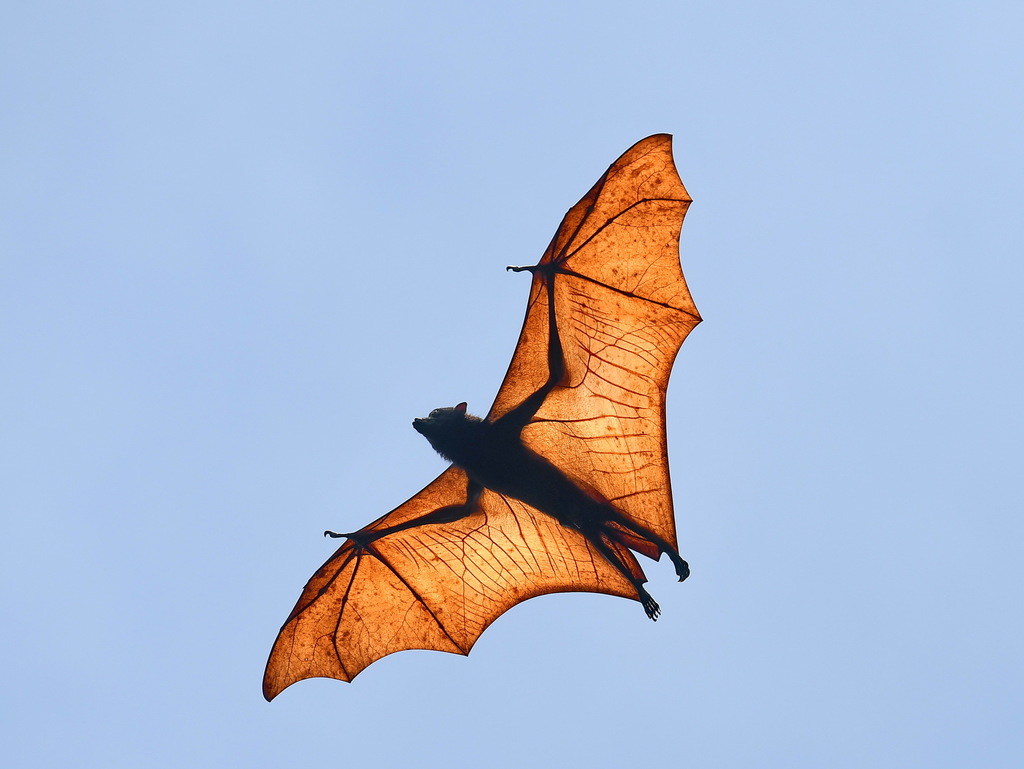
There are over 1400 types of bats. That means that about 20% of all mammals are bats! Most of these are insect-eating bats, the type that use echolocation: bouncing sound off objects to navigate their environment and track down delicious prey.
Large flying fox
Scientific name: Pteropus vampyrus
The large flying fox is a type of fruit-eating bat that lives in Southeast Asia. Its range includes the Malay Peninsula, the Philippines, and Indonesia. Some other names for this bat are the greater flying fox, the Malayan flying fox, and the kalang.
The large flying fox is one of the largest bats, with a wingspan of up to 1.5 meters (4 feet 11 inches)! It has a cute, fox-like face, with pointy ears and big brown eyes that help it see well. Its brown coat varies in color with age.
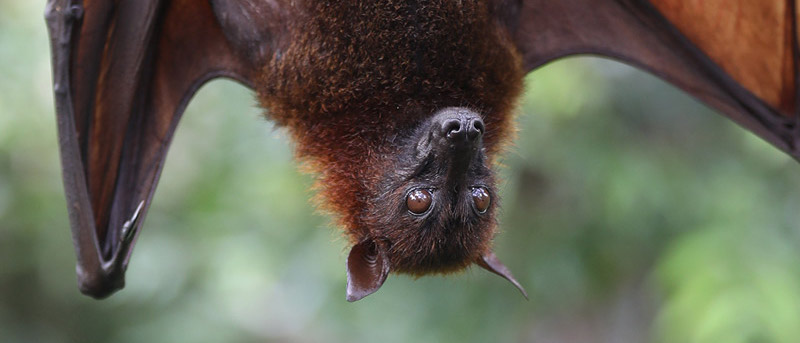
The large flying fox is not a vampire as its scientific name might have you think. Pteropus vampyrus is actually a vegetarian! (There are vampire bats that eat blood, but that’s another story.) The large flying fox eats flowers, nectar, and fruit from a range of trees including coconut, rambutan, fig, durian, mango, and banana.
While nibbling, drinking nectar, and flying from tree to tree, large flying foxes provide a couple of valuable ecosystem services: 1) they pollinate plants and 2) they deposit seeds in their poo so new trees can grow. They can fly up to 50 km (31 miles) per night on their feeding and seed dispersing travels. Thanks, flying foxes!

Large flying foxes are social and vocal. They live in noisy colonies numbering thousands of individuals. They roost during the day in trees, hanging upside-down to catch a little shut-eye. They also have the odd chat with their friends and neighbors. When they roost, they wrap their wings around themselves. This cozy built-in blanket helps them thermoregulate (change their body temperature). If they get hot, they can use their wings to fan themselves.

Female flying foxes mature around age 2, gestate (are pregnant) for 6 months, and usually give birth to one pup per year. Pups drink milk from mom for a few months before switching to a flower, nectar, and fruit diet. Large flying foxes can live for around 15 years in the wild.
Habitat loss (through deforestation and habitat change) and unsustainable hunting are two factors causing the number of large flying foxes to drop.
You may like these stories
Bats in Indonesia help people by pollinating crops

Steph saves bats! An interview with a bat rehabilitator

Cool horseshoe bat seen again after 40 years
